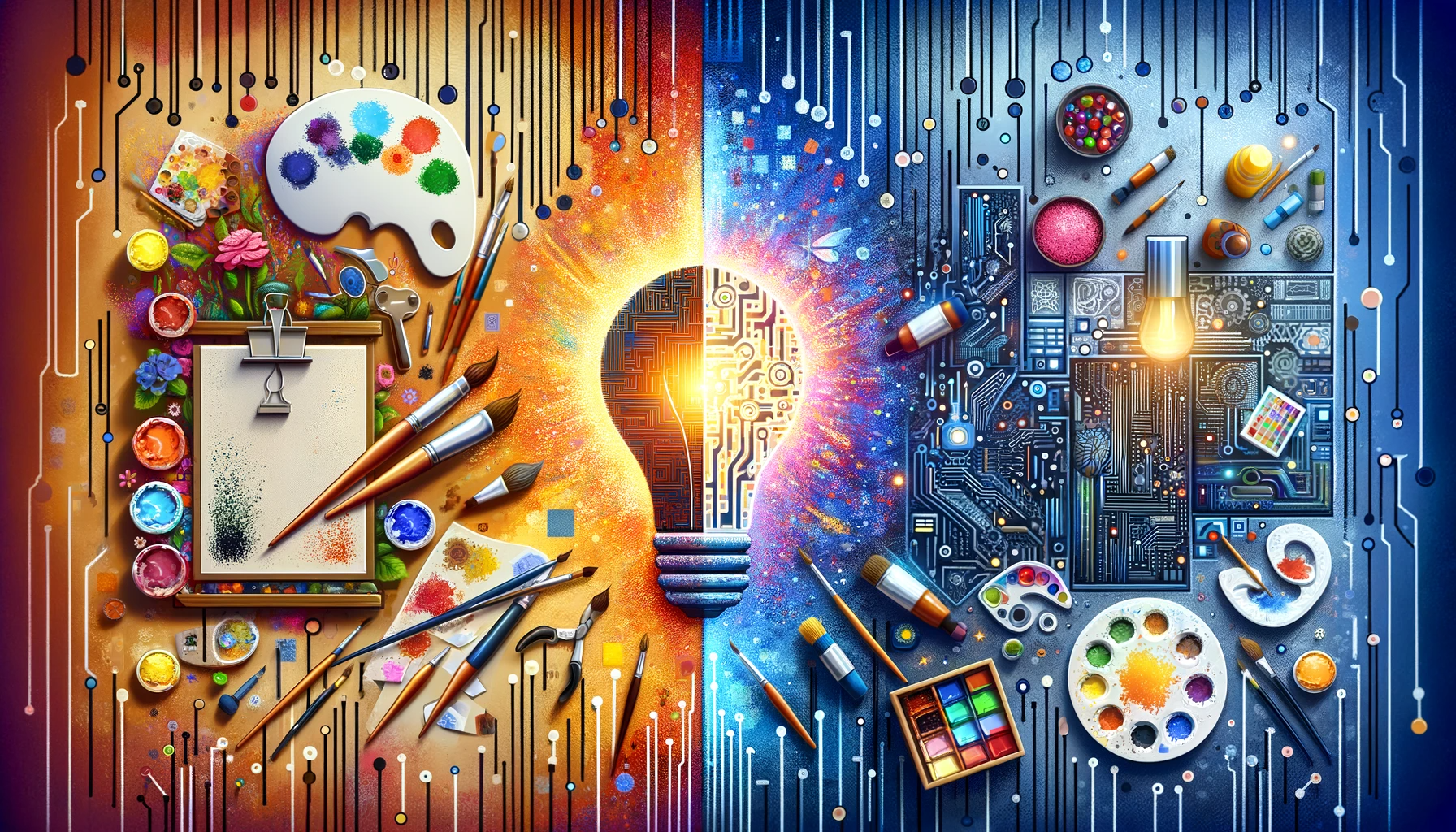The recent focus on artificial intelligence (AI)-generated art in renowned galleries, museums, and the media has ignited discussions regarding its influence on human creativity. These discussions revolve around unanswered questions about assessing AI-created and human-made art. In a recent publication in the journal Scientific Reports, researchers conducted a series of six experiments to assess both AI-generated and human-created art.
 Study: Evaluating the Impact of AI on Human Creativity in Art. Image credit: Generated using DALL.E.3
Study: Evaluating the Impact of AI on Human Creativity in Art. Image credit: Generated using DALL.E.3
Background
The recent rise of AI-generated art in prestigious art venues and the media has sparked debates about its impact, particularly in comparison to human-made art and the evolving role of human creativity. Historical evidence from other industries suggests that automation often decreases the value of human products and labor. However, when it comes to the ability of AI to automate creativity, there are complexities at play.
Evaluations of art often incorporate aesthetic and social dimensions that go beyond production costs. Factors such as an artist's use of color, emotional depth, subject complexity, and artistic brand influence perceptions of value and creativity. Therefore, it is challenging to predict whether exposure to AI-made art will impact the value of human creativity.
The current study takes a psychological approach to address these questions. It investigates how attributions of artistic sources (human-made or AI-made) influence judgments across various dimensions, including monetary value, labor, skill, and creativity. Researchers conducted six experiments to evaluate AI-made and human-made art. The first two experiments were conducted in 2017 and 2018, predating recent AI-art innovations such as Midjourney and Data Augmented Language Learning with Exploration (DALL-E2).
In contrast, the final experiment took place in 2023, coinciding with the emergence of Midjourney Version 4 and DALL-E2, marking a shift in the perception of AI art in the public eye.
Experiments and results
In the first experiment, 119 participants assessed 28 images across various artistic styles, labeled as AI-made or human-made. These images were evaluated on artistic dimensions such as brightness, colorfulness, complexity, emotional content, skill, inspiration, cost, and likability, displaying high internal consistency. Results showed that AI-made images received less favorable evaluations across various dimensions, revealing a bias against AI-generated art.
The second experiment involved 415 participants evaluating the same images, introducing a "willingness to pay" measure and the classification of art. AI-labeled images were rated as less expensive and less skillful, and participants were less likely to classify them as art. Ambiguous source information had a milder impact on evaluations.
In Experiment three, 405 participants compared art labeled as human-made and AI-made, affecting the evaluation of human artists' creativity. Art labeled as human-made was rated as more creative than preceding AI-labeled art, suggesting comparisons enhance human creativity perception.
Experiment four, with 789 participants, conceptually replicated Experiment three, confirming the positive influence of human-made art comparisons on perceived creativity. In Experiment five, 709 participants rated creativity, reaffirming AI-labeled art's lower ratings and the enhancing effect of comparisons on human creativity. Finally, in Experiment six, researchers explored art collaboratively produced by humans and AI. The first painting was evaluated less favorably when labeled as AI-made, while the collaborative painting was rated between human- and AI-labeled paintings, influenced by the comparison's context.
The research findings from six experiments suggest distinct patterns in the evaluation of art attributed to humans and AI. Across these experiments, it becomes evident that art labeled as AI-made faces a notable devaluation, especially concerning monetary value and skill (Experiments one and two). The effects are substantial, with AI labels in the final experiment resulting in a 62 percent reduction in perceived monetary value and a 77 percent decrease in estimated production time compared to human effort. Furthermore, AI-labeled art tends to be less liked and less likely to be regarded as "art," although these devaluation effects can be mitigated when direct comparisons between human and AI efforts are avoided (Experiments two and three).
An intriguing aspect of the experiments is that they intentionally used AI-generated stimuli designed to be indistinguishable from human-made art. Consequently, the findings are primarily linked to source attributions rather than content differences.
Conclusion
In summary, researchers conducted experiments to evaluate the impact of AI on the value of human creativity, which is a complex and evolving area. The debates and concerns surrounding AI's role in creativity parallel historical reactions to inventions like the camera. While challenges exist, the research findings provide a glimpse of a future where human creativity persists and even thrives, akin to how the advent of photography led to new forms of art and artistic expression.